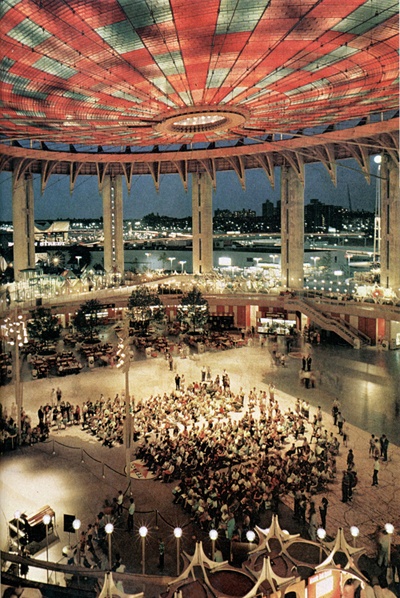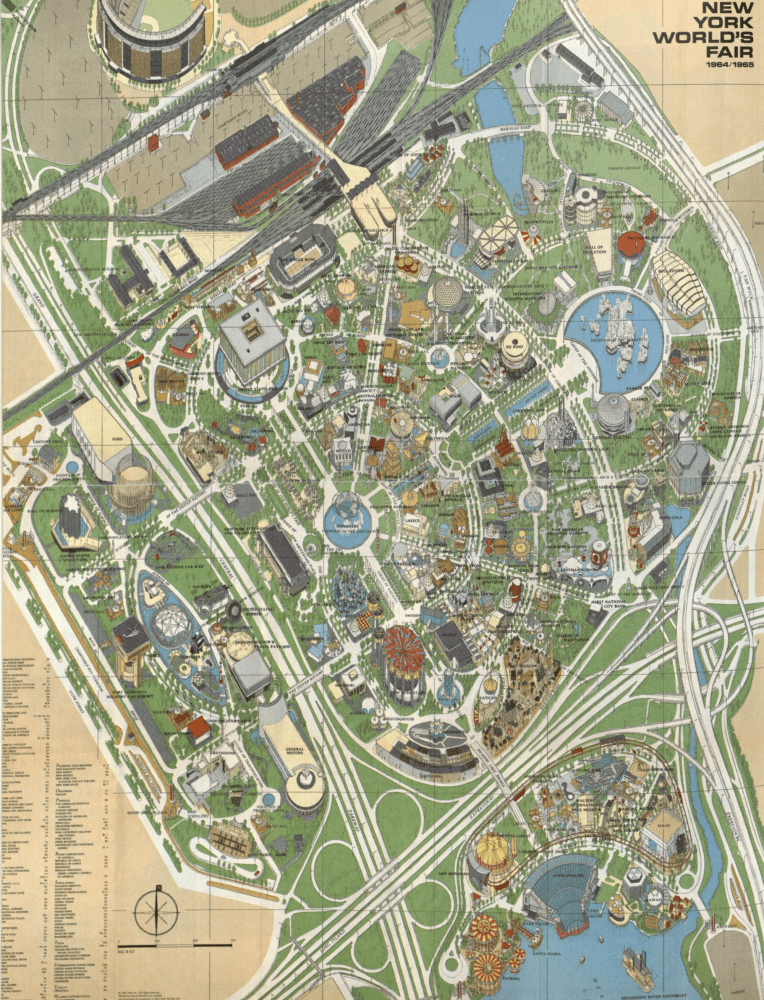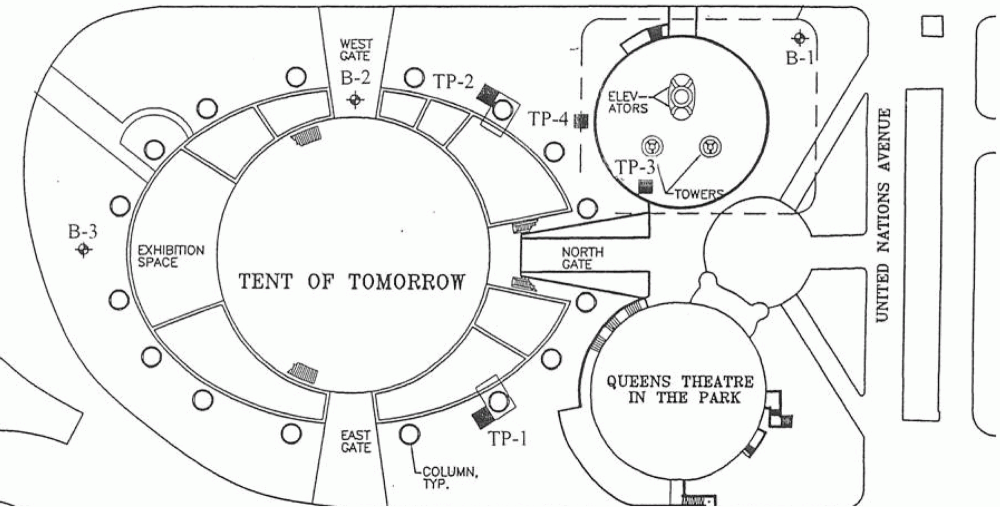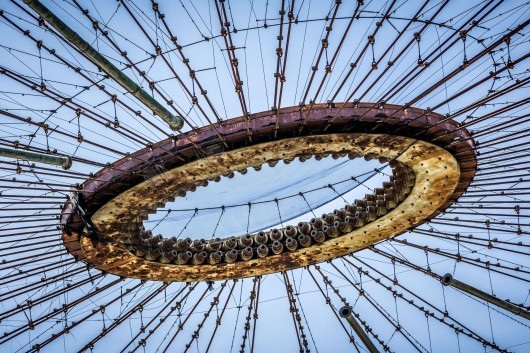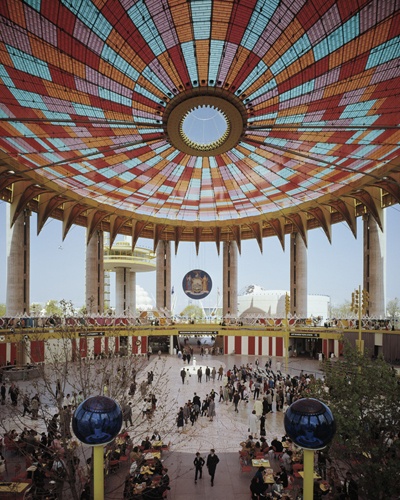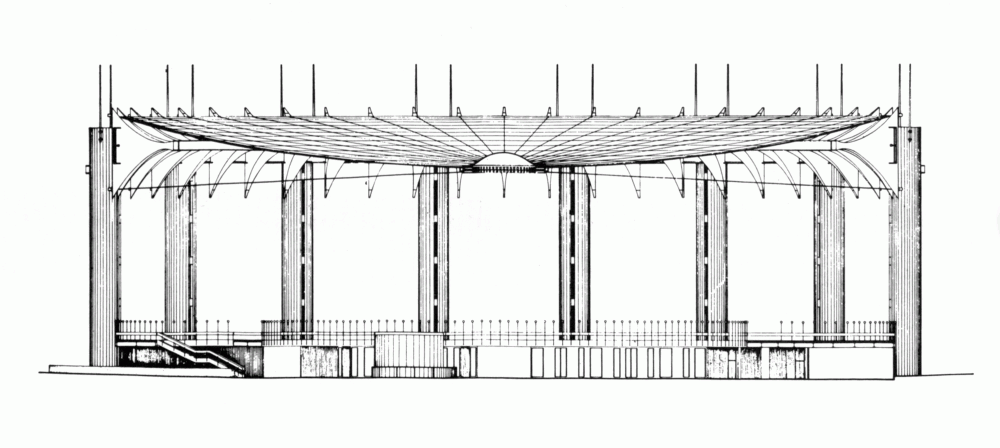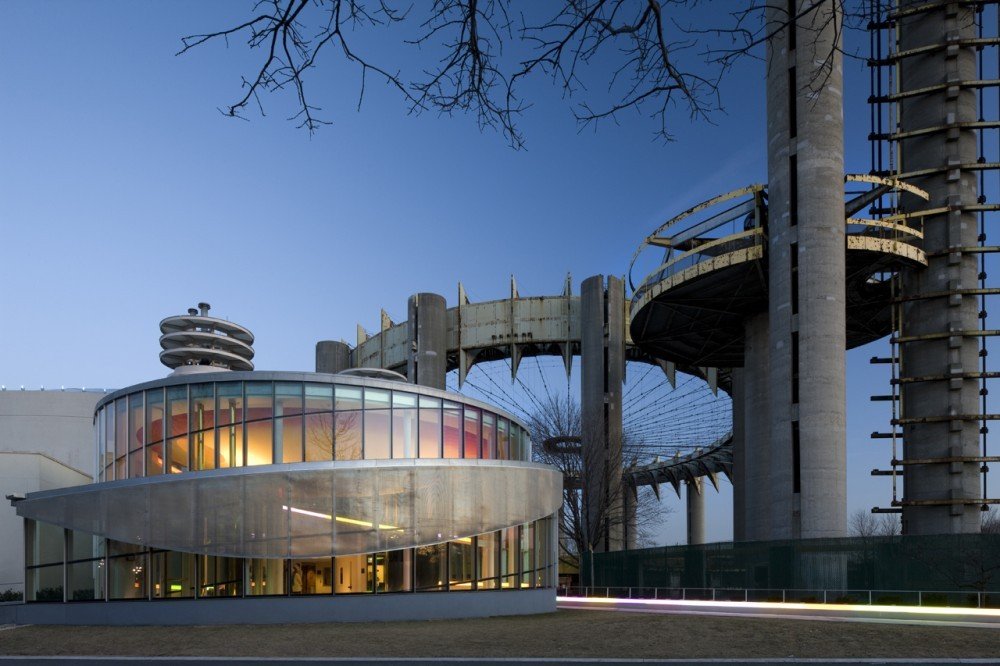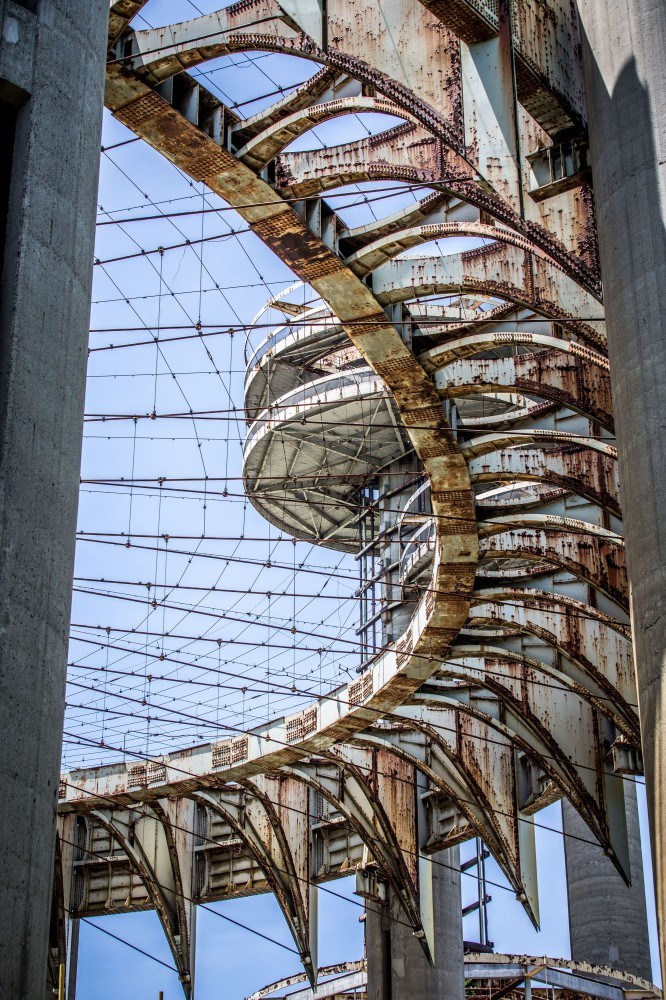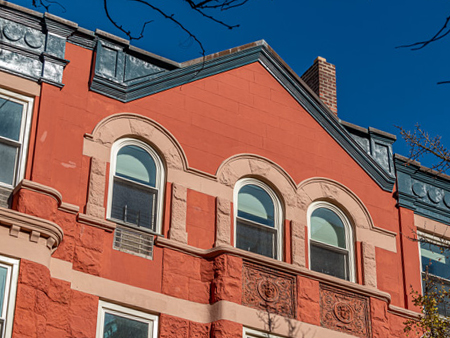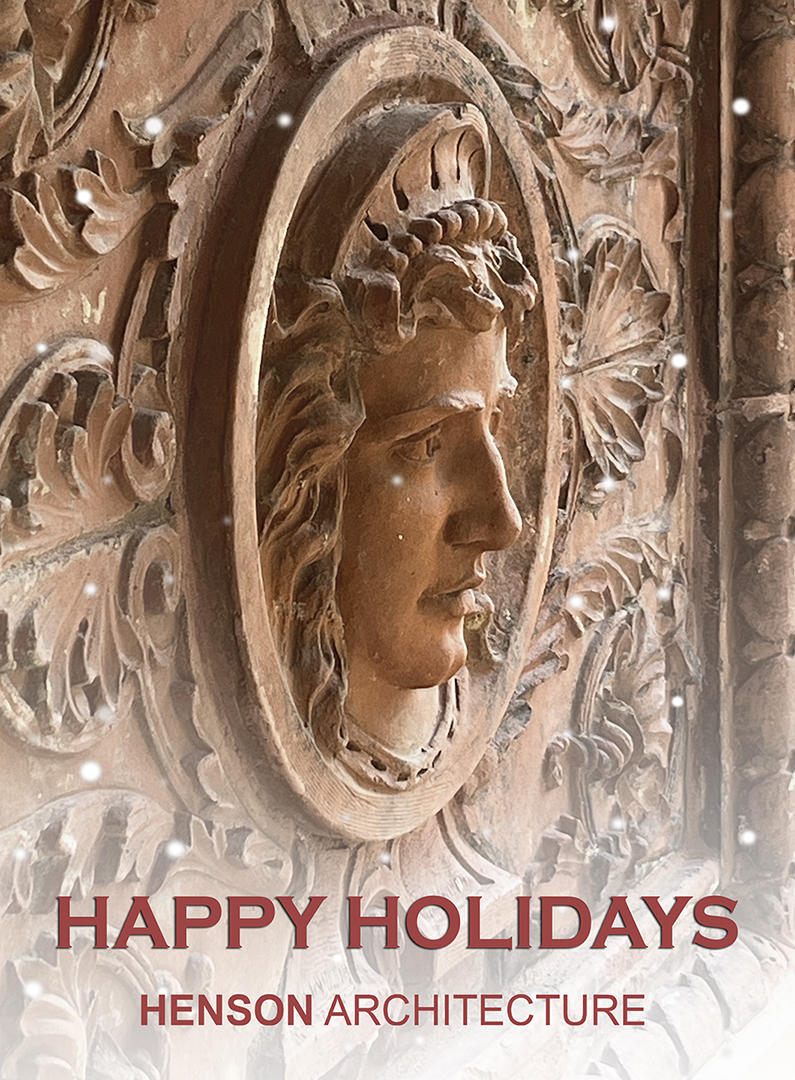Michelle Miller reports for Archdaily: New York State Pavillion / Phillip Johnson
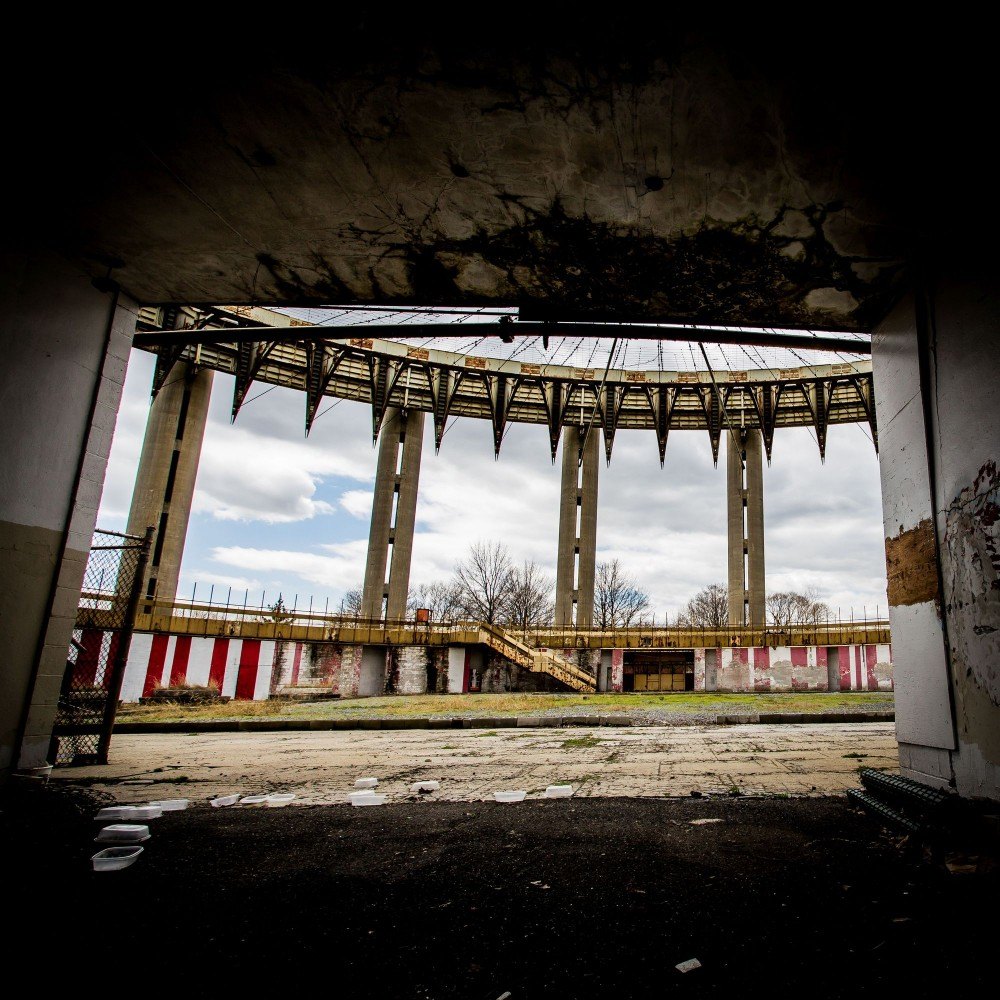
It is rare to find an architectural project whose history makes such strange bedfellows as the New York State Pavilion: a master architect and millions of exhibition patrons, roller skaters and rock stars, stray cats and Iron Man [1]. For three hours on April 22, in honor of the fifty year anniversary of the 1964-65 New York World’s Fair, the city of Queens will open the long shuttered gates to Phillip Johnson’s most futuristic work.
The Pavilion is architecture as spectacle, and a relic of a past vision for the future. Designed as an amphitheater and exhibition space, the New York State Pavilion was the largest and tallest at the fair, and is one of only two structures still standing. After decades of neglect and deterioration, the future of this modern ruin is tenuous as officials and the public consider options for demolition or reuse.
With the theme of “Man’s Achievement on a Shrinking Globe in an Expanding Universe,” the 1964-65 World’s Fair occupied a site of almost a square mile. The grounds in Flushing Meadows Corona Park, Queens had been the site of the 1939-40 World’s Fair. While all pavilions were new, the infrastructure and overall plan were retained. The New York State Pavilion inhabited a site in a thematic zone designated for Federal and State pavilions.
Governor Nelson Rockefeller commissioned Philip Johnson to design New York State’s pavilion on the fairgrounds. Johnson had recently designed the New York State Center at Lincoln Center, home to the New York City Ballet.
Prolific and ever evolving, Phillip Johnson was one of the foremost architectural practitioners and critics of the twentieth century. Educated at Harvard in both the classics and architecture, he is perhaps best known for his role as director of the Department of Architecture at the Museum of Modern Art and his residence The Glass House. While Johnson’s earlier projects aligned closely with Modern tenets, during the 1960s he began to explore a more individual and sometimes referential style. The futuristic aesthetic of his design for the World’s Fair reflects the trend of “Googie” architecture, which embraced space-age imagery such as the flying saucer.
Johnson’s intent for the World’s Fair was to create “an unengaged free space as an example of the greatness of New York, rather than as a warehouse full of exhibit material.” [2] To this end, Johnson designed three main components: an open-air “Tent of Tomorrow,” a cluster of three “Astro-View” observation towers, and a cylindrical “Theaterama.”
The “Tent of Tomorrow”, an ironic circus tent, encloses a 350’ by 250’ elliptical area, a form influenced by his appreciation for the Italian Baroque [3]. During the fair, this grand ovoid amphitheater hosted fashion shows, children’s rides, art shows, and informal entertainers.
Upon entering the Tent, visitors traversed an enormous terrazzo road map showing New York’s cities, topography, parks and natural features, along with a marker for each location of corporate sponsor Texaco’s gas stations. Painted red and white stripes along the lower walls whimsically reinforce the circus allusion.
Rising 100 feet, sixteen slip-formed hollow concrete columns, 12’8” in diameter, support a “bicycle wheel” roof with outer steel compression ring and inner tension ring.
A double-diaphragm of steel cables slope gently down to a smaller central ring, giving the roof a convex shape.
At the time of the fair, the cables supported colorful plastic Kalwall sheeting. The roof was assembled on the ground and then hoisted into place. Both the use of slip-form concrete and the roof construction were novel innovations at the time of construction.
Three disk shaped observation towers reach a height of 226 feet. A twenty second ride in a glass “Sky Streak” elevators provided an ever expanding panorama and brought visitors to the uppermost observation deck. The next lower platform served the same function, and the lowest held a snackbar. To Johnon, who regarded elevators as necessary evils that destroyed one’s experience of procession, this was their only pleasant application [4].
The Theatreama, the only enclosed building onsite, featured a slide show panorama of images projects in 360 degrees. Contemporary pop art by famous artists such as Roy Lichtenstein, Andy Warhol, and James Rosenquist adorned the exterior walls.
Overall, critics reacted negatively to the fair’s heavy-handed corporate influence and lack of unifying architectural scheme. Johnson’s pavilion was an exception, receiving positive reviews from critics of the day who noted the architect’s successful marriage of lighthearted spectacle with gravitas. New York Times writer Ada Louis Huxtable called the Pavilion “a runaway success, day or night…. a sophisticated frivolity… seriously and beautifully constructed. This is ‘carnival’ with class.” [5]
For several years after the fair, the Tent of Tomorrow housed art shows and music concerts. In 1970 is was converted to a roller skating rink, but only a few years later was closed when Kalwall panels were found to be falling from the structure. The building department ordered all panels be removed, and the structure has been abandoned every since.
Johnson/Burgee architects were engaged for an interior renovation of the Pavilion in 1982. The Theaterama was renovated in the 1980s and thrives as the Queens Theater in the Park. A spiraling glass addition by Caples Jefferson Architects completed in 2010 provides a reception area and an additional cabaret at the foot of the observation towers.
The uncertain future of the New York State Pavilion is a topic of hot debate as its fiftieth anniversary looms. The parks department in Queens has commissioned engineering studies, held public workshops, and worked with architecture firms to image and plan for possible scenarios. Costs range from $14 million for demolition, $43 million to stabilize the structures without allowing access, $52 million to restore it to it’s 1964 program, and $72 million to realize the reuse plan envisioned (pro-bono) by Perkins + Will. [6] It was listed on the State and National Registers of Historic Places as of June 2010.
A group of volunteers has dedicated time each year since 2009 to repaint the exterior and interior to the original red and white stripes with yellow trim. Another group called People for the Pavilion raises awareness through programs, events and online efforts. The group was founded by Salmaan Khan, who works with Friends of the High Line, and Matthew Silva, who is working on a documentary on Johnson’s project.
For more information on the New York State Pavilion, see the website of the People for the Pavilion or find them on Facebook. For more on Phillip Johnson, check out his other works featured on ArchDaily here.

